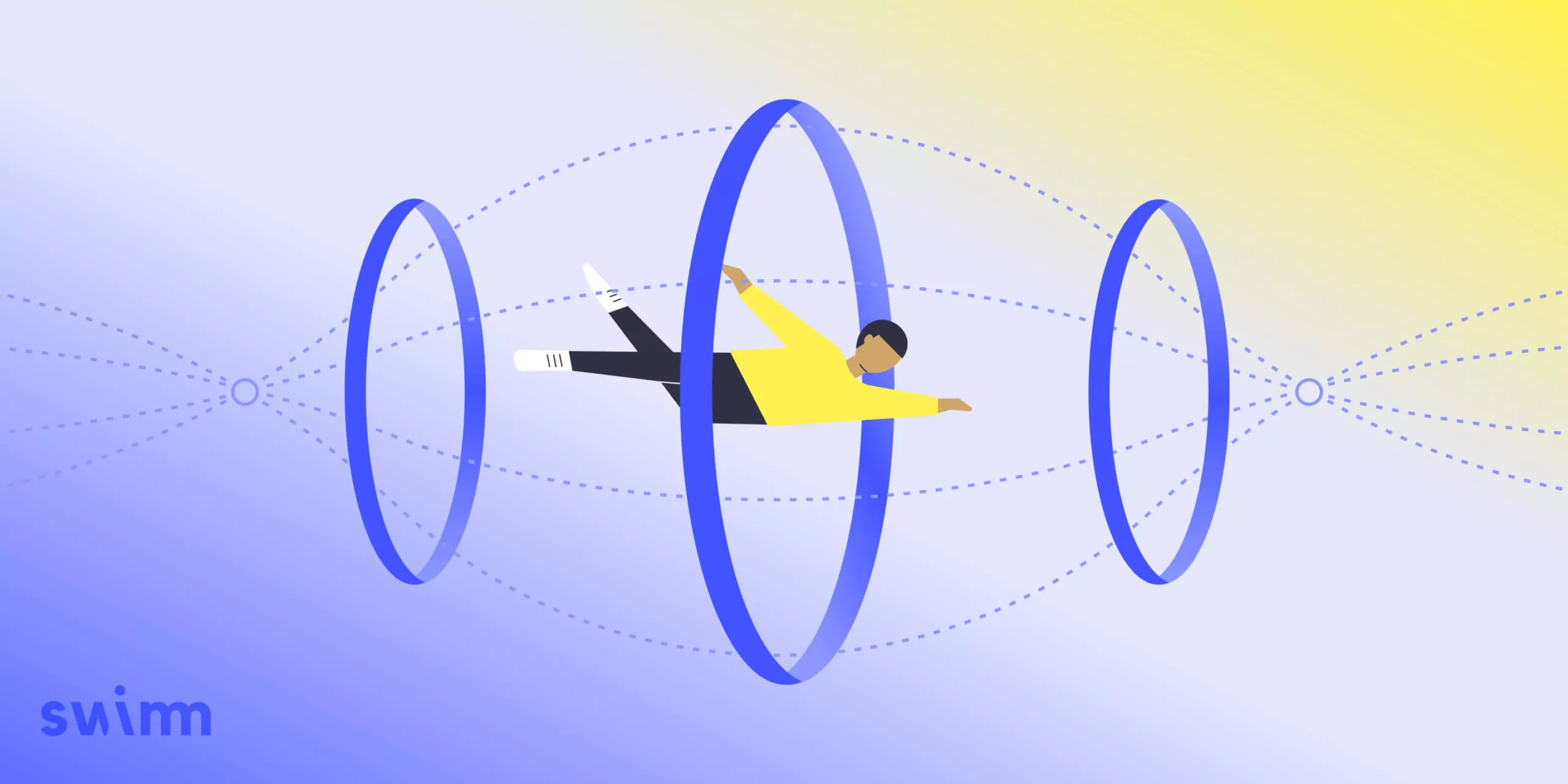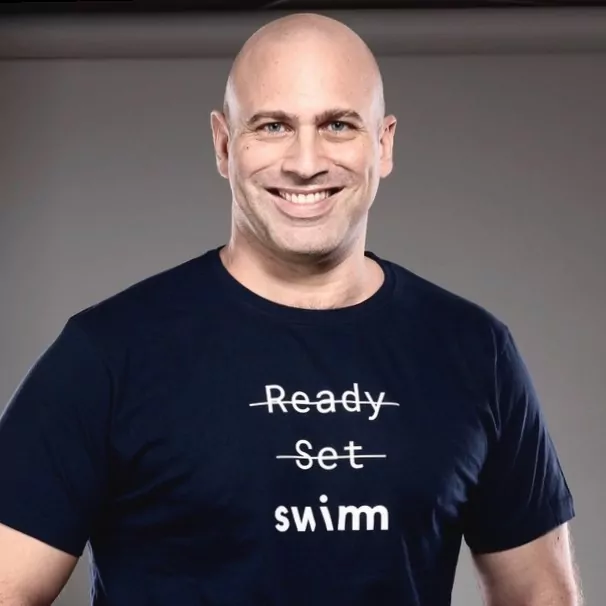Swimm has a clear and straightforward mission: ease the pains of developers by synchronizing teams, documentation, and code.
Our platform is built on many years of close work with engineering teams revealing deep insights about the importance of quality developer documentation. Since launching Swimm in November 2019, we’ve learned that successful documentation depends on docs being easy to create, maintain, and find. Swimm has rethought how documentation is written, shared, and maintained so it’s never outdated and always in sync with the current state of code.
And indeed, developers using Swimm across the globe – in search of better ways of creating and maintaining efficient documentation – are syncing with code and no longer sinking in outdated and impossible-to-locate documentation.
Solving complex challenges for growing companies
The bigger companies become, the more complex challenges they face. Throw in some accelerated growth for successful product market fit, and the complexity can become overwhelming.
Engineering teams, in particular, face intimidating scaling challenges during times of rapid growth: expanding the team with good hires, transferring knowledge, and releasing features. When engineers can’t keep up, they resort to custom and adapted solutions. Soon they are dealing with tons of files, microservices, and legacy code.
It’s a recipe for frustration, at best.
These situations are very intricate, and the market lacks meaningful solutions. Wiki-style documentation apps and online project management workspaces get implemented as quick fixes but rarely meet expectations or day-to-day needs. High-growth companies need more order than these tools can provide and much less chaos.
It’s tempting to believe software can close the gap, but it rarely does.
The real issue holding back teams is shared knowledge
Engineers are solely focused on building, not knowledge management. Therefore, not enough attention or care is paid to training and mentorship, and chaos rears its ugly head.
Rapid growth hits engineers in other ways, too. It’s common for a team to quickly balloon from a single cross-functional team of five people to a department consisting of several skill-based teams. Again, this isn’t a scaling problem but a knowledge management issue.
Swimm excels at solving knowledge management chaos for high-growth companies. Code snippets, variable names, and cross-repository dependencies are tracked within the Swimm ecosystem. For example, when back end authentication code is changed by one team, notifications can be sent immediately to the front-end devs who write session management code.
Swimm is the new knowledge operating system for your code
We built Swimm to help developers ramp up to new codebases, and it’s evolved far beyond our expectations.
We are building Swimm as the new knowledge operating system for your code. Teams can now manage documentation policies and updates within any CI/CD pipeline. It’s easy to use, delivers value almost immediately, and ensures docs are never outdated even when code changes. This solves a major problem for dev teams because, until now, code documentation has not been scalable or sustainable.
Highly complex problems require clear goals and minimal gaps. Swimm’s Continuous Documentation operating system keeps teams agile by syncing as fast as code evolves, ensuring:
- Documentation is continuously created when pushing new code.
- Documentation is tightly coupled with the code itself via snippets, function names, and values.
- Docs are easy to find while working on a task, navigating a new area of the code, or transferring knowledge within teams.
- Docs and tutorials are easy to maintain and enforce with Swimm’s Auto-sync.
Documentation for documentation’s sake is not the goal
It’s important to understand that documentation for documentation’s sake is not the goal, nor should it be. Swimm’s code-coupled capabilities help make docs more effective by encouraging developers to discuss not just the “how” of code, but the “why.”
To help devs be better writers, we give them the tools to embed live code into a doc directly, store docs in the code repository (and even include per-branch doc updates), and the ability to auto-generate documentation with either templates or guided doc creation.
Because Swimm is intelligent, it can recognize when documentation-impacting code changes are committed. Our patented Swimm Verify and Auto-sync features automatically updates their docs at any relevant pull, merge, or CI test.
Rather than live in some completely isolated environment where devs are unlikely to be present, Swimm integrates directly with IDEs and the tools devs use every day, like Slack and GitHub. Anyone can look at code in their IDE and see whether there’s a link to a related document to explain the code.
Real-world results with Swimm
As much as we love the Swimm, we know engineers need to have evidence that it both works and fulfills promises.
The graph below shows a predictable decrease in new documentation needing to be created and a marked increase in the consumption of that documentation.
In other words, dev teams aren’t sinking. They’re swimming.
Despite the real problems developers have seen with documentation, there’s no disputing the value of up-to-date, reliable docs. GitHub’s 2021 developer study showed a 50% boost in productivity with effective documentation.
Developers crave good onboarding documentation
It makes a difference in developer onboarding, and Riskfuel is now spending 55% less time onboarding new employees. Moreover, a Gallup report recently showed that only 12% of employees strongly agree that their organizations do a great job onboarding, noting that remote work makes onboarding even harder. We also interviewed over 80 engineers and managers, and more than 50% of them say it takes more than six months for new hires to become productive and independent.
Meanwhile, every time we meet a new team, there’s always that “a-ha moment” when they see the light at the end of the documentation tunnel.
When engineers realize how much Swimm frees them up to do, they immediately talk about shipping faster and solving harder problems.
Bottom line
Swimm is much more than a documentation tool. It is a knowledge operating system for your codebase. With native integrations into CI/CD pipelines, IDEs, Slack, GitHub, and our web application, engineers can both solve their knowledge management problems, increase their productivity, and save countless hours onboarding new teammates.
All of the benefits of Swimm are available today. Swimm is transforming how teams work, and we see it changing lives already.
We use Swimm ourselves, and it has transformed how we deliver.
You can get started with Swimm by signing up, and you can use our native integrations right away. We’re also more than happy to give you a demo. Just reach out and let us know.

